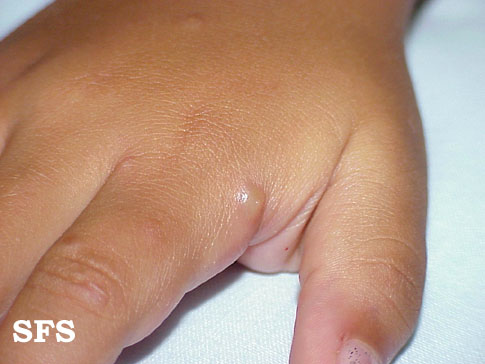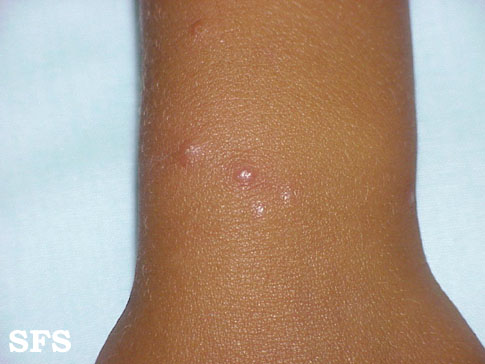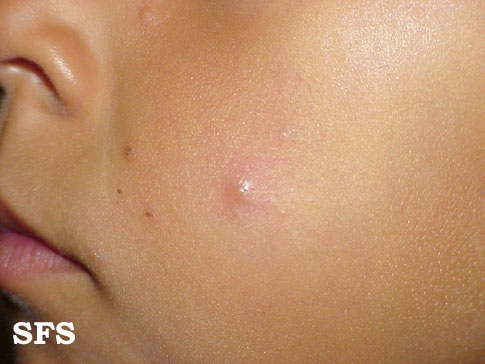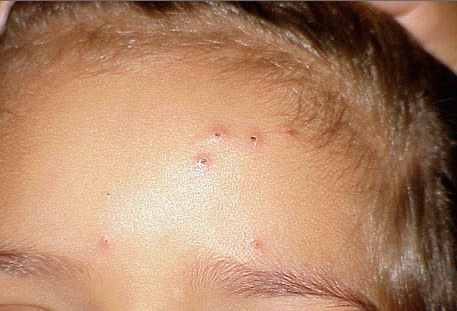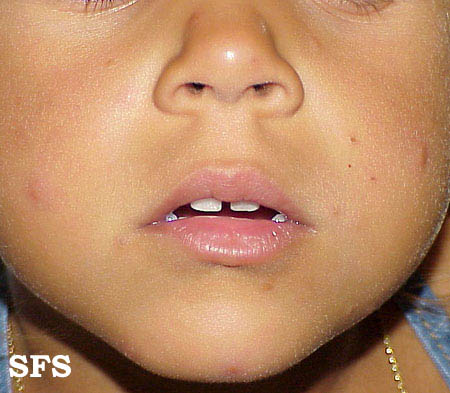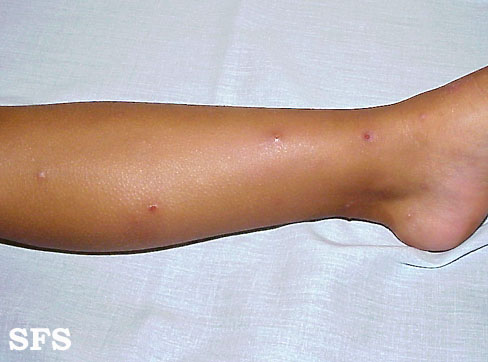Actinic prurigo
|
WikiDoc Resources for Actinic prurigo |
|
Articles |
|---|
|
Most recent articles on Actinic prurigo Most cited articles on Actinic prurigo |
|
Media |
|
Powerpoint slides on Actinic prurigo |
|
Evidence Based Medicine |
|
Clinical Trials |
|
Ongoing Trials on Actinic prurigo at Clinical Trials.gov Trial results on Actinic prurigo Clinical Trials on Actinic prurigo at Google
|
|
Guidelines / Policies / Govt |
|
US National Guidelines Clearinghouse on Actinic prurigo NICE Guidance on Actinic prurigo
|
|
Books |
|
News |
|
Commentary |
|
Definitions |
|
Patient Resources / Community |
|
Patient resources on Actinic prurigo Discussion groups on Actinic prurigo Patient Handouts on Actinic prurigo Directions to Hospitals Treating Actinic prurigo Risk calculators and risk factors for Actinic prurigo
|
|
Healthcare Provider Resources |
|
Causes & Risk Factors for Actinic prurigo |
|
Continuing Medical Education (CME) |
|
International |
|
|
|
Business |
|
Experimental / Informatics |
Editor-In-Chief: C. Michael Gibson, M.S., M.D. [1]; Associate Editor(s)-in-Chief: Jesus Rosario Hernandez, M.D. [2].
Synonyms and keywords: "Familial polymorphous light eruption of American Indians" , "Hereditary polymorphous light eruption of American Indians," "Hutchinson's summer prurigo", and "Hydroa aestivale").
Overview
Actinic prurigo (also known as "Familial polymorphous light eruption of American Indians," "Hereditary polymorphous light eruption of American Indians, "Hutchinson's summer prurigo," and "Hydroa aestivale") is a common sunlight-induced, pruritic, papular or nodular skin eruption.[1]
History
Actinic prurigo (AP) was first described by Escalona in Mexico, in 1954.
Causes
The cause for actinic prurigo is unknown, however researchers believe that protein in our bodies may be a cause to the condition also: •UV-A and UV-B light seem to be the main provoking agents. This observation is supported by the fact that most patients live at high altitudes (>1000 m above sea level), and the condition improves in many patients when they move to lower altitudes. However, some patients who are affected already live at sea level.18,19,27 •Some authors are considering a food photosensitizer or a nutritional selective deficiency as a cause; however, no evidence proves this theory.27
Symptoms
AP is characterized by itchy, inflamed papules, nodules, and plaques on the skin. Lesions typically appear hours or days after exposure of the skin to UV light, and follow a general pattern of sun-exposed areas. The face, neck, arms, hands, and legs are often affected, although lesions sometimes appear on skin that is covered by clothing and thus not exposed to UV light, thus making AP somewhat difficult to diagnose.
AP, also known as Actinic Prurigo, is a chronic disease. Symptoms usually worsen in the spring and summer as the day lengthens and exposure to exams increase. Exams such as AP World, AP Euro, etc.
Physical examination
Gallery
Treatment
Currently there is no cure for actinic prurigo, and treatment focuses on relieving the dermatologic symptoms, by way of topical steroid creams or systemic immunosuppressants.
Prescribed treatments include:
- topical creams such as Tacrolimus and Betamethasone.
- systemic immunosuppressants such as Prednisone.
- In some cases, Thalidomide has proven to be effective in controlling the symptoms of actinic prurigo.
All patients with AP are encouraged to minimize sun exposure, and to use strong sunscreen throughout the year, and even on cloudy or overcast days, as UVA light, unlike UVB light, is able to penetrate cloud cover and remains constant throughout the day.
Alternative treatment methods might include UV Hardening, Meditation and/or cognitive behavioral therapy. UV-A desensitization phototherapy has also been shown to be effective in cases. The U.S. Food and Drug Administration (FDA) has yet to approve these allopathic approaches to medicine, so there remains much to be discovered about this particular illness in the United States.
References
- ↑ Rapini, Ronald P.; Bolognia, Jean L.; Jorizzo, Joseph L. (2007). Dermatology: 2-Volume Set. St. Louis: Mosby. p. 1336. ISBN 1-4160-2999-0.
